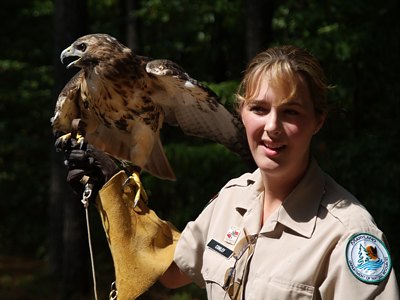As a Quest subscriber (or a visitor to my site) and by virtue of necessity, you often have to serve as a photography guru for family and friends, who come to you with any equipment problems they experience. This article is supposed to make your life a bit easier, listing some of the most typical problems — based on a quick scan of Internet forums and a large fraction of email I'm receiving.
This picture, shot in the Tuckahoe State Park, Maryland, illustrates the first point below.
If exposed as metered, it would have burned-out highlights on the face and shirt. This is why I applied an exposure compensation of -0.7 EV, and the highlights are just fine.
Olympus E-500, ZD 40-150 mm F/3.5-4.5; see also the XGA version

-
My camera notoriously overexposes or underexposes.
This is not the camera, but the photographer. Only the photographer knows what is the desired tonality of the image, what are the most important areas of the picture, and how bright they should be. Use exposure compensation with understanding. I've never met an advanced photographer whose camera, regardless of brand or price, would over- or underexpose.
Really, the only reliable way to meter the exposure is to use an external, incident-light meter. I'm very tempted to write a separate article on this subject.
-
My camera sets the white balance wrong.
A problem similar to the one above. How would the camera know if the bride's dress is warm off-white, or just white, but basking in a warm light? The automated setting may be quite unpredictable, especially in the green-magenta plane. Use the manual white balance as needed. For critical applications, try setting WB by reference off a white sheet of paper, if your camera has this feature.
-
My lens is not sharp.
This may sometimes be the case, but usually the problem is with autofocus being set on a point at a different distance than the main subject. Learn how to lock AF on the subject by half-pressing the shutter release.
Very often it is not the focus but the camera shake; both effects look quite different in the final image. Learn to check what shutter speed the camera will use in a given light, and if it is not handholdable, use flash or just do not take the picture, period.
I'm going to skip the problem of AF in low light, and the AF-assist light issues; this would be too much for this short article.
Last but not least: If the camera is a compact, clamshell type (and those have humongous depth of field, so the picture should be sharp almost regardless of that), have a closer look at the lens. A friend of mine had all pictures quite unsharp and unnaturally soft, until I used some lens tissue to remove all the gunk from the lens surface (and yes, I've seen my share of dirty lenses!)
-
My flash does not seem to work, it is too weak.
Have you seen a sports stadium, with hundreds of cameras flashing from the stands? Most people do not understand that above three meters or so, the flash (at least the built-in unit) does not make any difference. Disabling the flash will at least put the camera in the long-exposure mode.
-
I need more megapixels.
This was understandable when cameras were evolving from 0.3 megapixel (yes, we remember those) up to 2 MP or so. At that time, the pixel count was, indeed, one of the most important specifications. From four or five MP up other factors are more critical in image quality.
I keep a set of A-4 prints from my old C-3000Z (three megapixels), just to show them to people who complain that their 5 MP camera needs to be "upgraded".
-
Image stabilization is essential.
I have yet to be convinced — it may be sometimes helpful, but just sometimes. Actually, mastering the right shooting technique may be cheaper and better.
My skepticism is based on the simpler-is-better principle: lens-based stabilization adds an extra group of elements causing unnecessary image degradation, while the body-based solution may introduce alignment problems.
-
I need a camera with raw image format for a greater dynamic range and highlight protection.
Not necessarily: the conversion from raw to RGB (JPEG) preserves the whole range originally recorded. If a photosite received enough light to saturate it, the highlight detail is lost already in the raw data. On the other hand, tonality manipulation may be somewhat easier if your raw-developing program allows to do it in 16 bits per color.
-
I need a new digital camera, as the one I own is already two years old.
This is a music to the ears of camera makers. While during the initial years of digital technology we were seeing major improvements every year or so, at present cameras of four years ago are usually as good as the recent vintage. Often they may be better, as the price undercutting in some segments of the market prevents manufacturers from doing a really good job. Example: try to get a current "rangefinder" model as good as the Olympus C-5050Z of 2002. Good luck.
-
I need a longer lens.
I've heard that sooo many times. And what a disappointment, when we get pictures which are badly focused or shaken. Lenses of 200 mm equivalent focal length or longer should, I sometimes tend to think, require a permit, like guns do.
-
Olympus (Canon, Nikon, whatever) cameras are better than others.
Not true: all major players make cameras better than needed by the market at which they are aimed. Most photographers (including myself) use better equipment than they need. Really.
Merry Christmas and a Happy New Year, everyone!